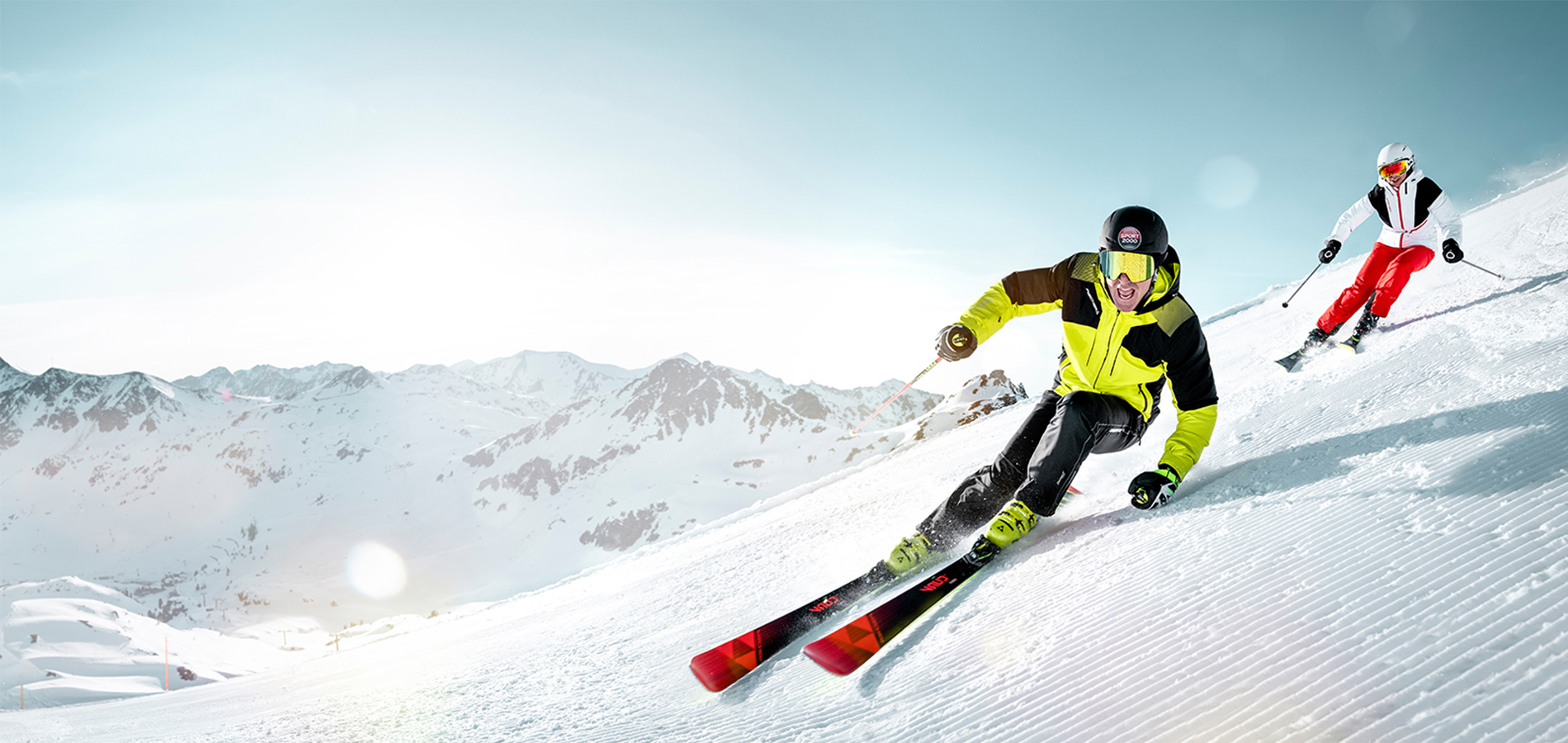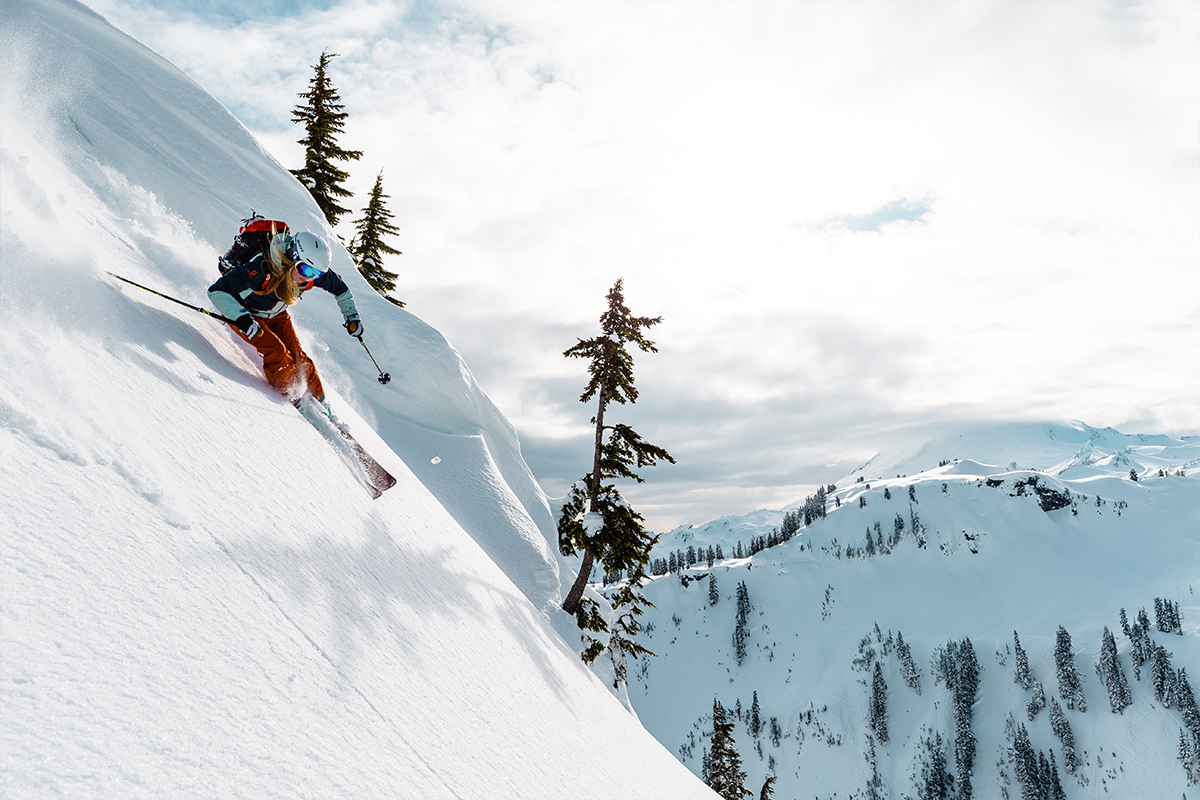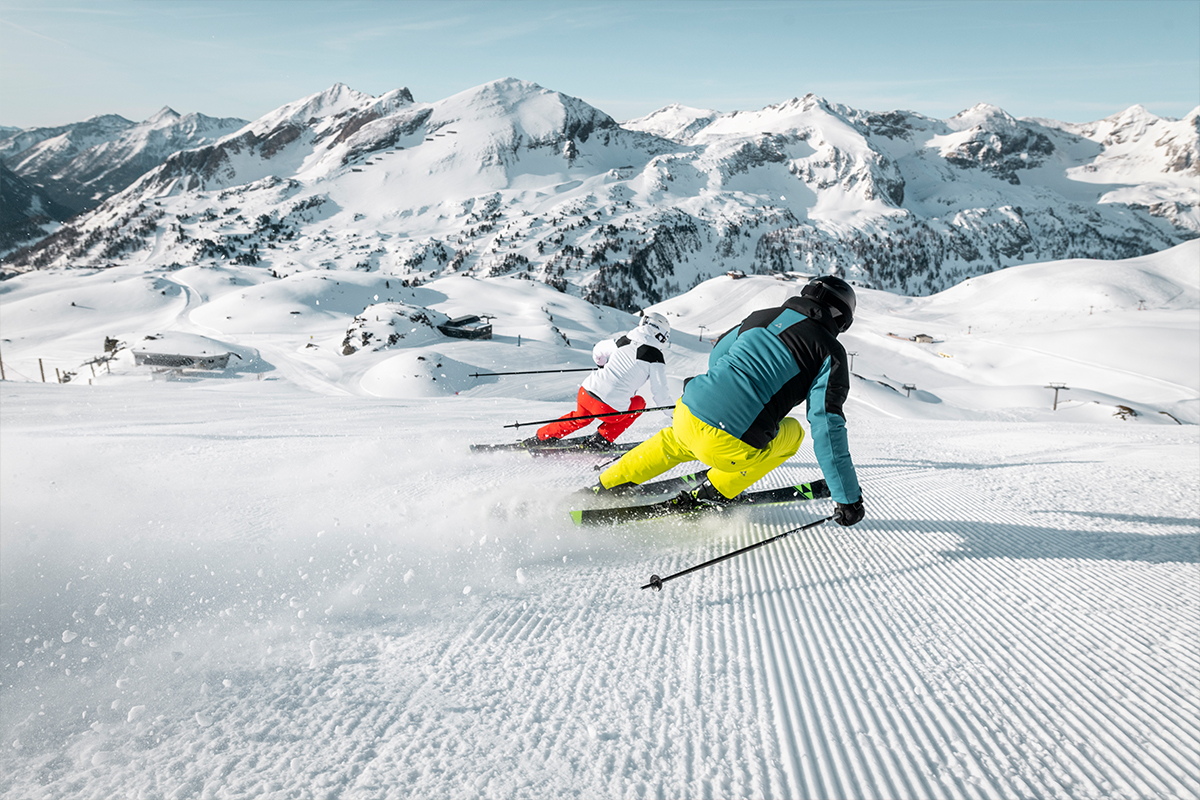
Exercises to improve your skiing technique
Interesting factsTouring ski

Passionate skiers know: it's even more fun to glide down the slope with the right skiing technique. Furthermore, it looks so much better! Yet, for us, simply to choose the piste as the way to get down to the valley is far too simple – and most probably for you too. For new adventures and new terrain you need special techniques that promise you an extra portion of fun on your skiing day. In this blog post you will learn all about fundamentals, technique and the right exercises!
Carving
the professional skiing technique
One of the supreme disciplines in skiing is the right carving technique – for more speed in the turns and pure aesthetics! Here the outside corner ski edges are raised during the turn, so that the curve is cut instead of "drifting" through. There is practically no loss of speed, since the braking effect on the edges is significantly lower! With specially developed skis such as the race carver, which has about ten times the radius of the ski's length, or the all-mountain carver, today anyone can learn the popular technique and apply it on the slopes.
The basic position with open, hip to shoulder wide ski position, slightly angled hip, knees and ankles and parallel skis is essential for carving. The arms should be held loosely and slightly bent close to the body. At sufficient speed, the turn is initiated from this position by applying pressure on the inner edge of the outer ski with the legs. Simultaneously, the knees and hips and the body's centre of gravity move to the middle of the turn, thus performing a tilting movement. The upper body remains straight and should not be twisted. The rest is simple, because centrifugal force takes over! You can easily compensate for the banking angle and the tendency to slip out on the slope by moving your hips towards the slope. Our tip: First take a few turns on the edge and then make a few drifted recovery turns!
Exercises for carving
Carving requires a lot of muscle power, body tension, good coordination and balance. Therefore you should definitely integrate strength training, with focus on the leg apparatus of course, into your workout. Coordination and balance for carving is best trained with selected ski gymnastics, but there are also many exercises that you can do directly on the piste. In this video you will find some great exercises for your next training session on the piste!
©
Scott

Great delight in deep snow!
It feels like riding on cotton wool: fresh powder snow! Freeriders get their kicks in deep snow and the feeling of freedom therefrom is probably unique. From a technical point of view, deep snow skiing requires special skills and is therefore avoided by beginners. In contrast to the piste, the snow here is super soft. On the one hand, this has the advantage that there is a natural braking effect and therefore better speed control is possible. On the other hand, with so much snow, you have to overcome a higher turning resistance during turns which quickly becomes a real challenge.
When "powdering" through deep snow, the skis are always kept very close together, resulting in better lift and more control. Special skis designed for powder skiing and freeriding can, of course, support this even better. These skis are particularly wide, which prevents sinking in. What is also important is that the valley ski plays a special role: it guides you in deep snow, gives direction and controls the turn.
Exercises for deep snow skiing
Of course, you will start off on a flatter deep-snow slope. As you ski straight ahead, bend and stretch your knees slightly in an alternating rhythm. Your skis will now appear and disappear from the snow. You can easily practice this movement on the piste. Up before the turn and down again afterwards, because this is the movement you´ll need to overcome the turning resistance. By changing direction slightly and using the poles to push yourself out of the snow, you can make turns. Any unevenness from the ground that you feel you can compensate for with your body – for this you should include balance exercises, for instance with a balance board, in your workout! One more tip: avoid transferring your weight backwards and always stay in rhythm! If you don´t have experience in deep powder snow, we advise you to take a safety course for open terrain.
The short turn skiing technique
With the short turn technique, as the name suggests, the curves are taken with a very small radius. There are several differences here compared to carving: a faster rhythm, targeted use of poles, fast movements, a braking drift component, stronger leg twisting, riding in the fall line and, in some cases, greater effort input make up this technique. The advantage: the flexible adjustment of the curve radius and adaptation to the nature of the piste can be implemented ingeniously. This is exactly why the short turn technique is also the best way to master steep slopes, bottlenecks and connecting trails without risk.
In the 3 phases of the short turn – turn beginning, middle of the turn and turn exit – several things have to be considered:
1.
The centre of gravity of the body should be slightly above the ski, so that the shin is pressed against the ski boot. This makes it easier to turn the skis, since just before the turn you stretch your legs and your toes build up pressure. Then the rocker of the ski should initiate the turning movement in the snow.
2.
The legs are bent and pressure is applied at full sole level to turn the skis.
3.
Then apply pressure to the end of the ski and put pressure on the valley ski – short turns require a lot of strength and concentration.
Exercises for clean short turns
Since the short swing technique requires a lot of muscle power and endurance, it is recommended to include ski gymnastics, strength training and endurance training in your regular workout! Yet there are also many exercises for the slopes. For example, in order to practice the high-low relief movement, i.e. stretching and bending before and in the curve, the arms are raised just before the curve, which stretches the body. In the curve, however, the hands are placed on the knees, which lowers the body's centre of gravity again. Even though this may look as though you´re standing on skis for the first time, this exercise will certainly help you to perfect the short turn skiing technique.

Black slopes, steep slopes and icy conditions
Black slopes are not for the faint-hearted: avoided by some, but loved by adrenaline junkies. The trip down the valley is made a little easier by the particular pressure on the outside ski. The magic word here is: edge up! The difficulty here is the speed, because you only really have control with a high angle between piste and ski edge. Particularly high pressure on the valley ski means that you can also glide over annoying icy spots. It is best to start the turns far away from the fall line to avoid unnecessary acceleration on steep slopes. Furthermore, it is advisable to keep your skis wide, as this increases stability and balance. The short turn technique is also very popular on steep slopes, so it is essential that you master this technique before descending a black piste!
TIP: We advise you to hire a professional skier and get good advice on skiing technique. A trained eye usually sees more than you might think and can accurately point out mistakes!
Now you really feel like trying out one of the skiing techniques and improving your skiing skills? Then rent a race carver or an extra wide ski for powder skiing right here at www.sport2000rent.com/en/skirental/.